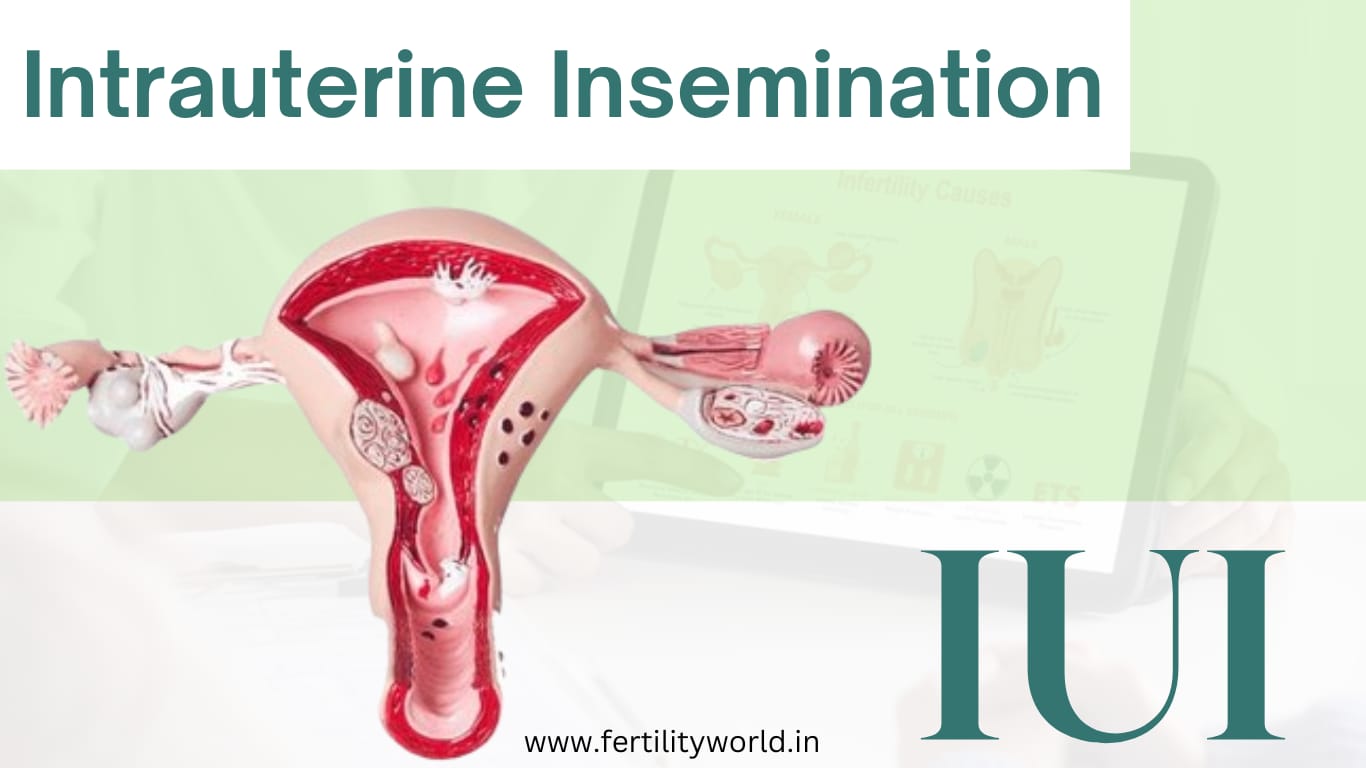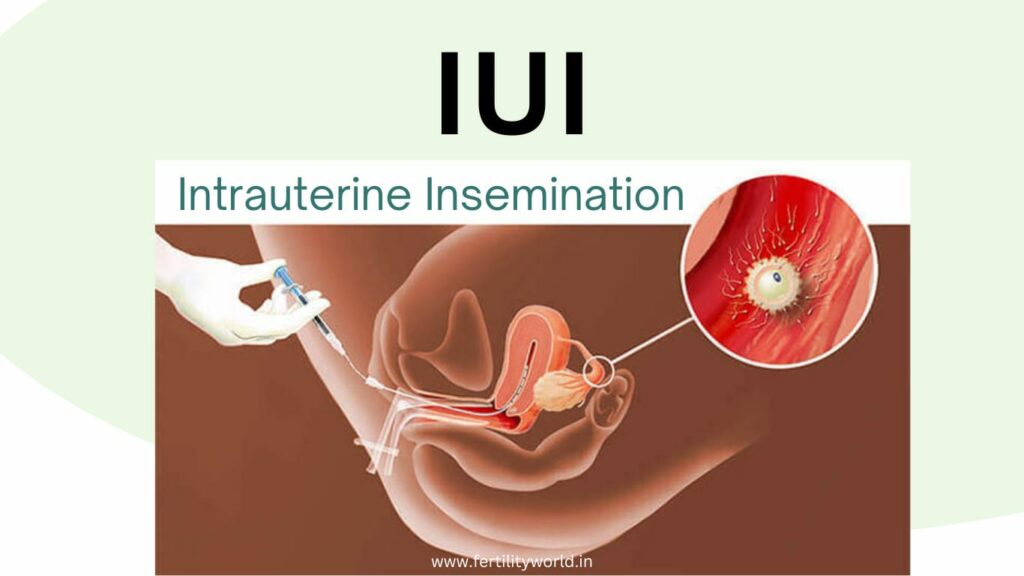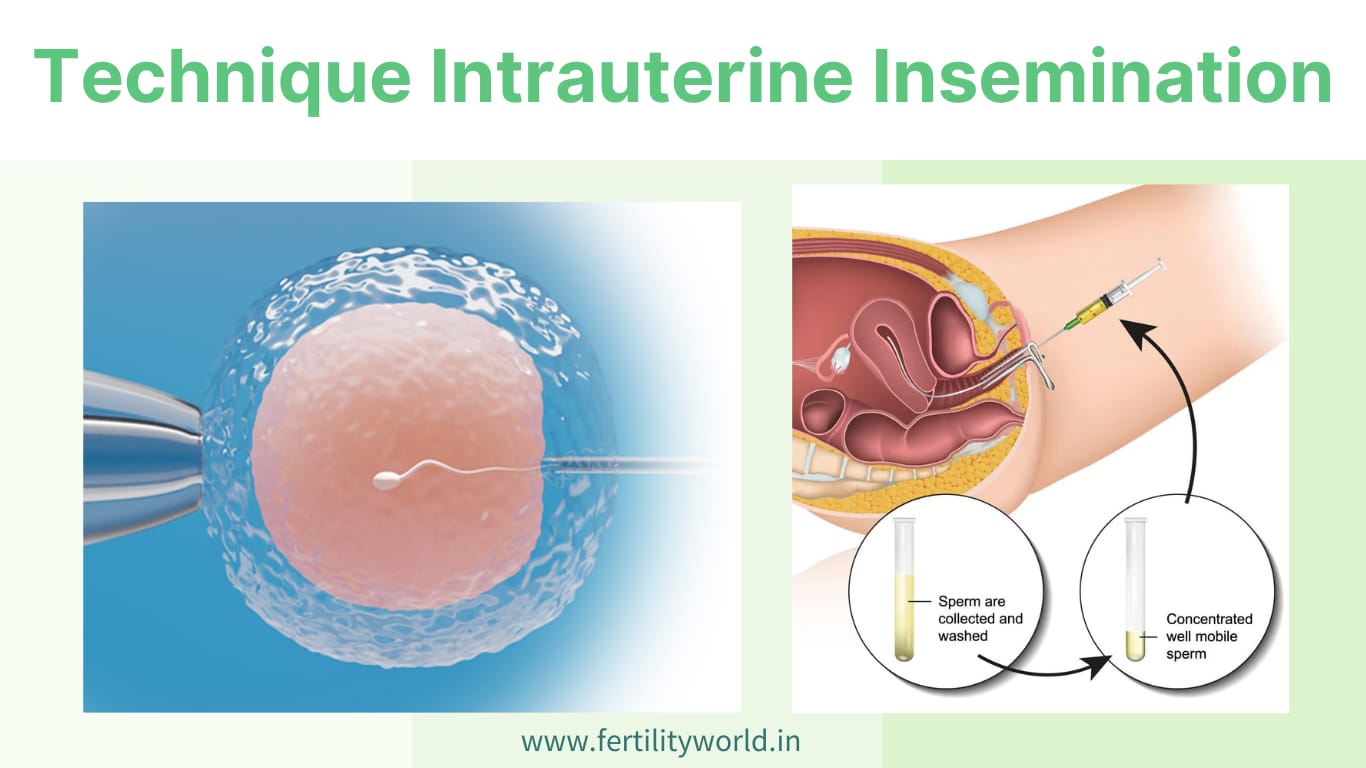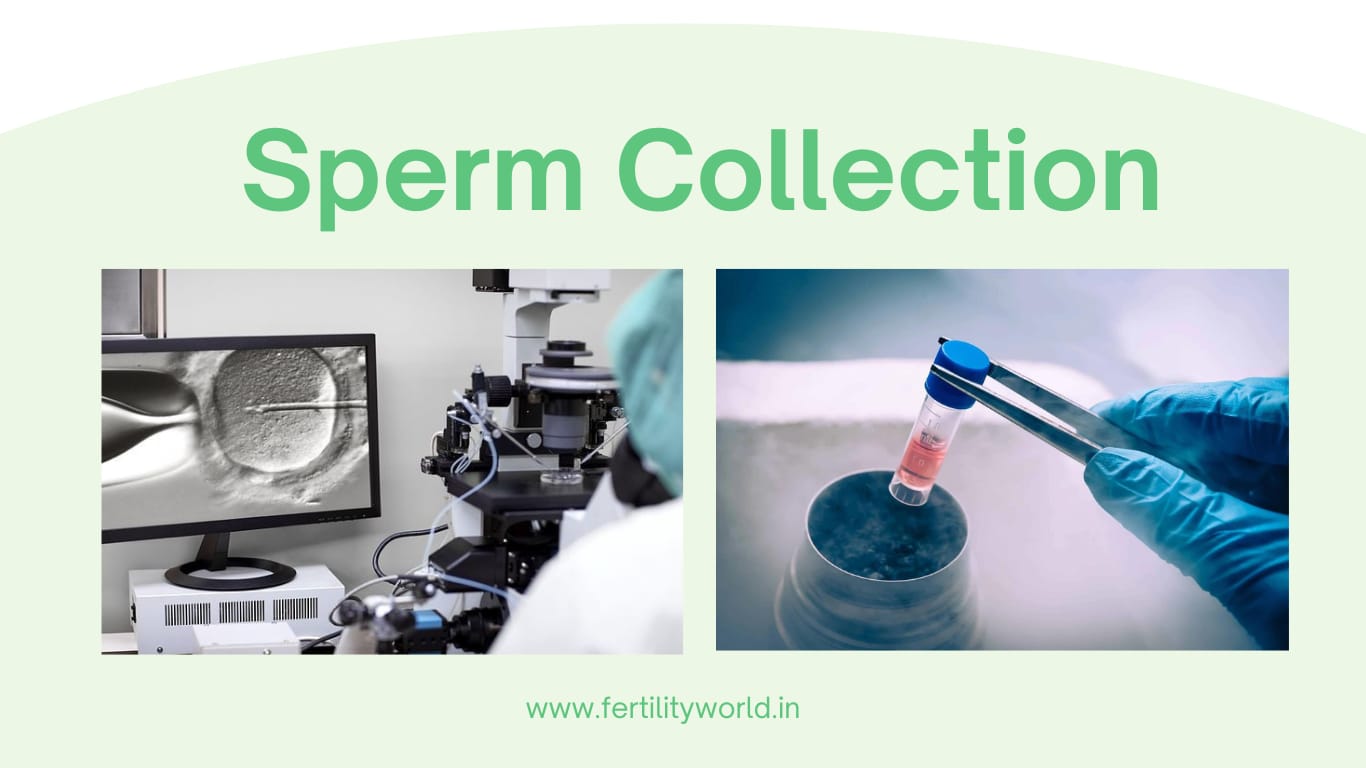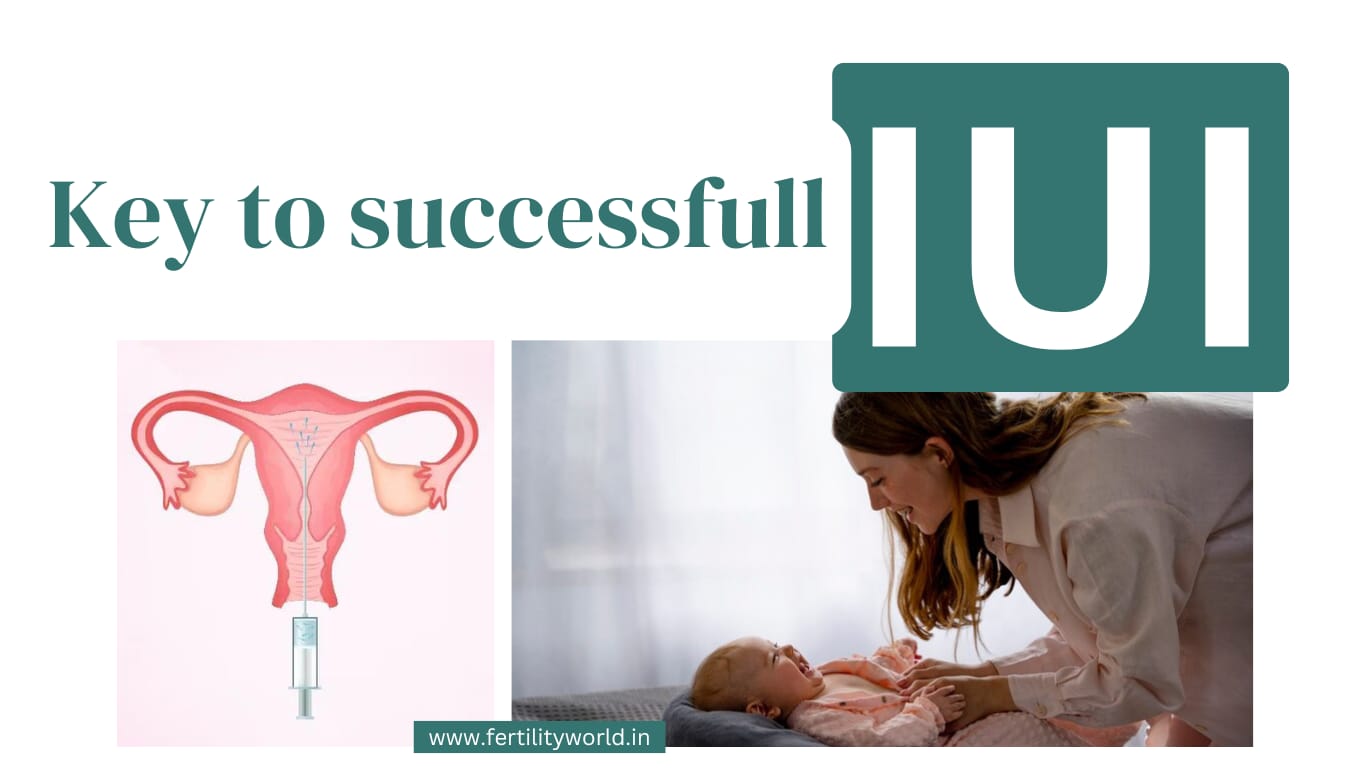Despite revolutionary advances in the field of assisted fertility treatment, like IVF, ICSI, and SUZI. Intrauterine Insemination (IUI) is the simplest, most effective, and cheapest approach to infertility treatment procedures that enables patients with various infertility problems to conceive. IUI overthrows other assisted reproductive treatments. The fertilityworld team has elaborate detailed IUI on this page.
- Book an online appointment: Get a free IUI consultation.
- Call/Wa:91 9311850412 Email:info@fertilityworld.in
What is Intrauterine Insemination?
Intrauterine insemination (IUI) is an infertility treatment that assists the sperm in fertilizing the eggs. IUI is an inexpensive, noninvasive, and effective first-line assisted reproductive treatment. IUI is provided to patients with cervical factors, moderate male factors, unexplained infertility, immunological infertility, and infertility due to ejaculatory disorders. Today, IUI is also proposed as a therapy for endometriosis, ovarian dysfunction, and even for tubal factors.
How Much Sperm Is Used for IUI?
It only takes a small amount of sperm for an IUI treatment because the sample is washed, concentrated, and put right into the uterus. The goal is to use sperm that move quickly so that they can get to the egg and fertilize it more easily. Understanding how much sperm is used for IUI helps couples know what to expect before treatment.
How Much Sperm Is Actually Used for IUI?
If you want to use IUI, Fertilityworld uses between 0.3 ml and 0.5 ml of washed and concentrated sperm (about 7 million motile sperm from 15-200 million total). The embryologist picks out the healthiest, fastest-moving sperm after washing them. A man may give between 1 and 3 ml of semen, but only a small amount is prepared and used for the final IUI process. The quality and movement of the sperm are more important than the total amount of semen. The amount of sperm used for IUI is described in the table below:
| Particulars of sperm preparation for IUI | Amount required |
| Initial amount (Before Washing)/collected during ejaculation | 1–3 ml |
| Washed & Concentrated (Healthy sperm selected for IUI) | 0.3–0.5 ml |
| Total Motile Sperm Count (Ideal) needed after washing | 7–20 million |
| Minimum TMSC for IUI/Least count for possible success | 5 million |
Exact Sperm Volume and Total Motile Sperm Needed for IUI
Doctors check the Total Motile Sperm Count (TMSC) to make sure that an IUI cycle goes well. The most significant amount of TMSC needed for IUI is
- 10 to 20 million sperm of excellent motility,
- The least number of motile sperm is 5 million.
- 1–5 million counts can work, but the chances of success go down.
So, the exact prepared sperm volume and total motile sperm needed for IUI is 0.3 to 0.5 ml. This makes the chances of fertilization better, even if the sperm count or amount of semen is low at first.
Intrauterine Insemination (IUI) technique
The technique of Intrauterine Insemination (IUI) is the simplest among other infertility treatments. Sperm preparation techniques and ultrasound monitoring techniques led to promising IUI success rates. IUI procedure greatly relies upon sperm preparation techniques where a single best quality sperm has to be selected which ensures its success rate. That sperm is carefully prepared and directly inserted in the uterus when an ovary releases one or more eggs. The sperm and egg unite in the fallopian tube, which connects the uterus to the ovaries, leading to fertilization and pregnancy.
How is sperm collected for Intrauterine Insemination (IUI)?
On average, sperm collection for Intrauterine Insemination (IUI) is done through masturbation (traditional method). The sample is collected in a sterile wide-mouth container and allowed to liquefy for about 30 minutes. Patients can give the sperm at home by collecting them in an approved container by the referring physician. A sperm collection can also be done through surgical aspiration like PESA, TESA, TESE, MESA, etc. This surgical aspiration is done for those males with very low sperm count, no sperm in the ejaculate, and a sperm mortality ratio.
How is sperm selected/prepared for Intrauterine Insemination (IUI)?
The fertilityworld IUI specialist follows three methods to select or prepare the sperms for the IUI procedure.
- Sperm ability to swim
The method is known as the “swim-up technique”. A layering culture medium is made over the liquefied semen where motile sperms swim up into the culture. The upper layered sperm-contained medium is selected for IUI.
- Sperm density
In this method, the semen sample is pipetted on top of the density column and centrifuged. Centrifugation separates sperm according to their density. The sperm with the highest concentration of gradient, motile, and morphologically normal is aspirated for the IUI procedure. Sperm preparation with the use of density gradient centrifugation is considered a standard technique in assisted reproductive techniques.
3.Sperm wash and centrifugation
The semen sample is diluted with a liquid medium and centrifuged. The solution is removed and the pellet (sperm content) in the bottom part after centrifugation is resuspended in a small amount of medium and incubated until the time of intrauterine insemination.
Key to a successful IUI
Though the technique of IUI has essentially remained the same since practiced, several advances in the type of medications, stimulation protocols, and strict patient selection criteria, tailored according to the age, and etiology of the patient have become the keys to a successful IUI treatment. Every clinic and doctor follows these keys that reduce the associated complications, such as multiple pregnancies and OHSS while maximizing the overall IUI pregnancy outcome. Other successful keys of sperm selection include
- Precise semen processing time management,
- Processing total motile sperm count,
- Rapid progressive motility after processing,
- Account for the actual sperm morphology,
- IUI insemination time, and 24h sperm survival protocol.
Intrauterine Insemination (IUI) success rate
The Intrauterine Insemination (IUI) success rate is up to 65% in women between 21-35 years and males below 45 years. IUI success rate relies upon the women’s reproductive organ function (fallopian tube, uterus, uterine cavity), male sperm motility, and morphology. IUI success rates also vary depending on the clinics you undergo. The pie chart below shows the IUI success rate obtained by the fertilityworld fertility clinic.
Is Intrauterine Insemination (IUI) painful?
No, Intrauterine Insemination (IUI) is generally less painful than other infertility treatments like IVF, ICSI, etc. Some people describe the discomfort as similar to a mild menstrual cramp after the IUI procedure. It is simply due to the insertion of a thin catheter into the uterus while placing the sperm into the uterus. This discomfort is very tolerable and very short-lived.
Cost of Intrauterine Insemination (IUI) in India
On average, the cost of Intrauterine Insemination (IUI) ranges from Rs.15,000 to Rs.30,000. IUI is considered the least invasive of all infertility treatments and can overpower advanced procedures cutting down their invasive package. In India, the best IUI destinations with the least cost are; IUI costs in Delhi NCR, IUI costs in Guwahati, Assam, etc. When compared, the IUI cost in Western countries is more expensive than in India.
IUI babies Vs. Normal babies.
There are no differences in the IUI babies when compared to normal babies. IUI directly follows the natural mode of fertilization and pregnancy, except for the injection of sperm to overcome sperm factors. IUI babies are just as healthy and normal as babies conceived naturally. The only primary difference between an IUI and a normal pregnancy is how conception takes place.
What is the risk of Intrauterine Insemination (IUI)?
In the Intrauterine Insemination (IUI) procedure, the risks involved are much less about 5% because IUI only assists in the natural fertilization of sperm and ovum. IUI risk is inevitable with fertility medication that generates more eggs. IUI can have a chance of developing Ovarian Hyperstimulation Syndrome (OHSS), and risk multiple or triplet births while using gonadotropins. IUI pregnancy with multiple babies can carry the risk of premature labor and low birth weight.
When is Intrauterine Insemination (IUI) recommended?
Intrauterine Insemination (IUI) is primarily recommended when couples cannot get pregnant with regular unprotected intercourse for at least 6 months. The fertility technique of IUI is mainly recommended for males with sub-infertility factors including low sperm count, poor sperm morphology, ejaculatory disorders, and unexplained infertility. However, experts can also recommend IUI to females with cervical factors, endometriosis, ovarian dysfunction, unexplained, and even tubal factors. IUI is the easiest, least invasive, and most basic form of infertility treatment which can give parenthood without further advanced fertility treatments that involve higher costs.
What is the difference between IUI and IVF?
The table below describes the difference between IUI and IVF fertility treatment:
| Sl. No. | DIFFERENCES | |
| Intrauterine Insemination (IUI) | In-Vitro fertilization (IVF) | |
| 1 | Mostly used for male infertility. | Treat both male and female infertility. |
| 1 | Simple procedure & least invasive. | Simple but complex steps & expensive. |
| 3 | Inject single sperm in the uterus. | Transfer the embryo(s) to the uterus. |
| 4 | Fertilization occurs in the female body naturally. | Fertilization occurs in the laboratory artificially. |
| 5 | Only the sperm is collected and prepared. | Both sperm and eggs are collected. |
| 6 | Good success rate with uncertainty. | Guaranteed success rates. |
| 7 | Not applicable to all infertility | Applicable to all infertility. |
Conclusions
While concluding the Intrauterine Insemination (IUI) the fertilityworld best Doctors highly suggest that desperate first-time couples and male infertile couples consider the IUI procedure as the first choice of infertility treatment. IUI is the simplest, least invasive, and painless than other advanced treatments. Simply, IUI can give you parenthood without spending more money and more stress. You just have to explain your conditions to the experts and get done with IUI. When IUI is done at the right age, right time, and right clinic, the better the chance of IUI success rate. Contact the fertilityworld now and receive free IUI consultation from the best specialist.

